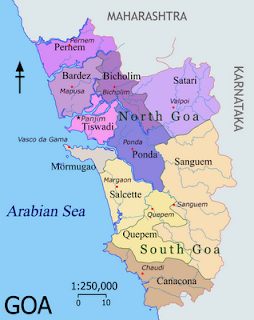Right from the ancient times till the establishment of the British Empire, India was famed for her fabulous wealth due to its trade through Asia and Europe, Greece and Rome. Even during the medieval period, i.e., roughly from the 12th to the 16th centuries, the country was prosperous despite the frequent political upheavals. A notable feature of this period was the growth of towns in various parts of the countries. The development was the result of the political and and economic policies followed by the Muslim rulers. These towns grew into trade and industrial centres which in turn led to the general prosperity. During the Sultanate period ( 13th to 17th century) this prosperity grew tremendously so that India became the richest country of the world in Mughal period due to a sound currency system based on silver tanka was in circulation. The peace and security during this period led to such development. The bourgeoning foreign trade helped not only in the development of towns but also in villages.
Products and Manufactures of Trade :From ancient times India was gamous for its textiles, which formed one of the chief items of export. A kind silk dyed in natural colours, was highly popular in south-east Asia, It was very much popular amongst the wealthy classes in Malayesia, Indonesia, and the Philiipines. In East Bengal there was another variety textiles including the embroidered tussar raped in quiltor munga on a cotton or jute, silk, silk and brocade edged handkerciefs. Dacca Muslin was remarkable for its fineness.Similarly, Malabar in Kerala was also famous for its coloured and printed cloth material.Hardwood furniture was modelled on the European design but the expensive carvings were the other items of export.

































 A vessels ( St. Gabriel, St Raphael, Berrio, Food Vessel ) weighed anchor in Lisbon towards India . vasco da Gama arrived in India ( Calicut, in the present state of Kerala) , He had to negotiate to with the local Governor ( The Saamoothiri Manavikraman Raja) in order to obtain favourable commercial deals - these ngotiations proved to be very difficult due to the cultural differences (in the West, Kings would offer gifts to their foreign guests ; but in the east, Kings expected to receive opulent presents ); therefore the merchandise introduced by the Portuguese did not impress the local zamorins (Saamoothiris = a title used by the Eradi Rulers).
A vessels ( St. Gabriel, St Raphael, Berrio, Food Vessel ) weighed anchor in Lisbon towards India . vasco da Gama arrived in India ( Calicut, in the present state of Kerala) , He had to negotiate to with the local Governor ( The Saamoothiri Manavikraman Raja) in order to obtain favourable commercial deals - these ngotiations proved to be very difficult due to the cultural differences (in the West, Kings would offer gifts to their foreign guests ; but in the east, Kings expected to receive opulent presents ); therefore the merchandise introduced by the Portuguese did not impress the local zamorins (Saamoothiris = a title used by the Eradi Rulers).














